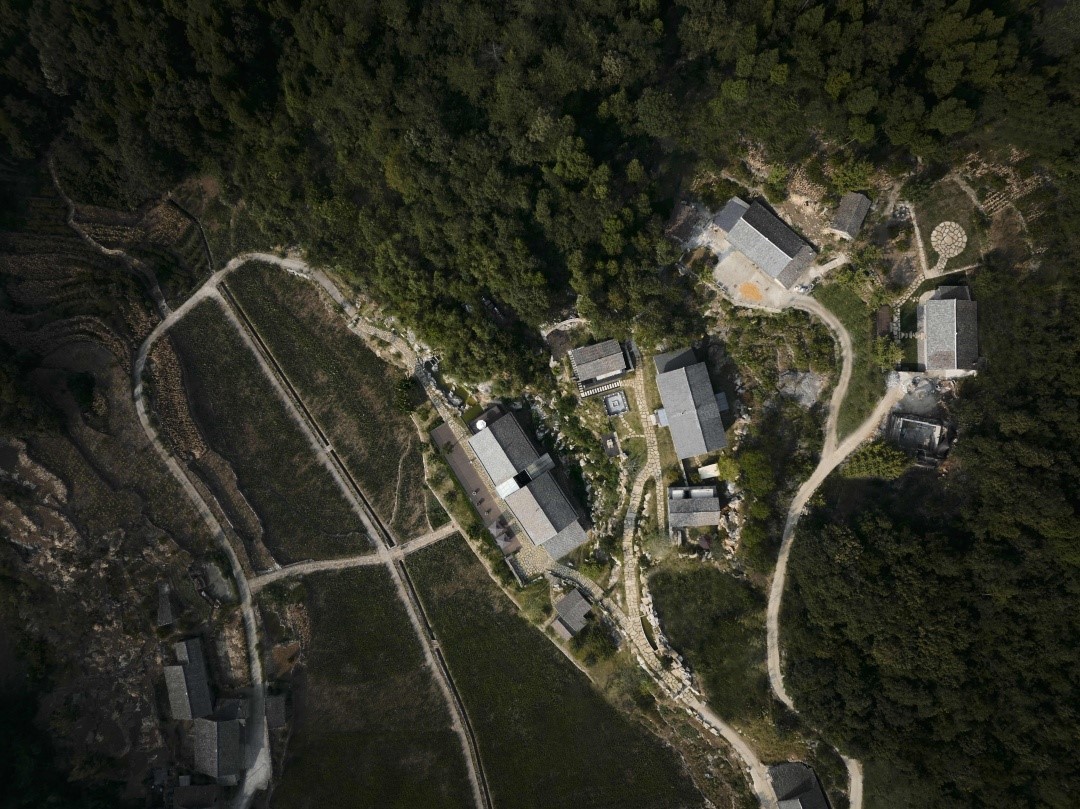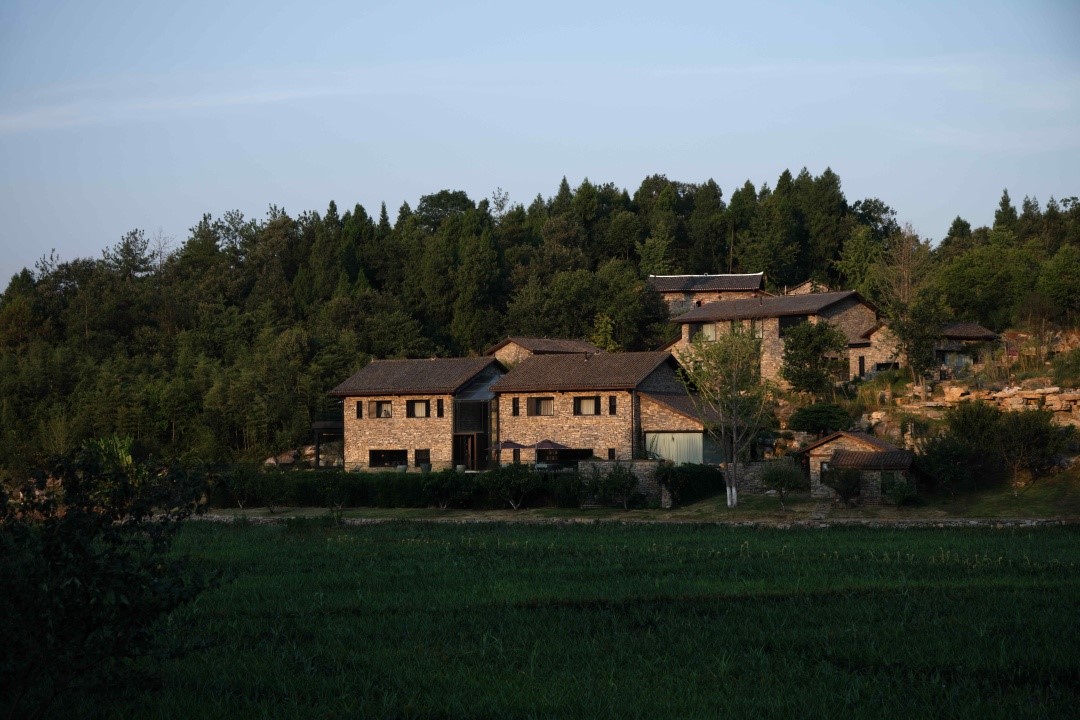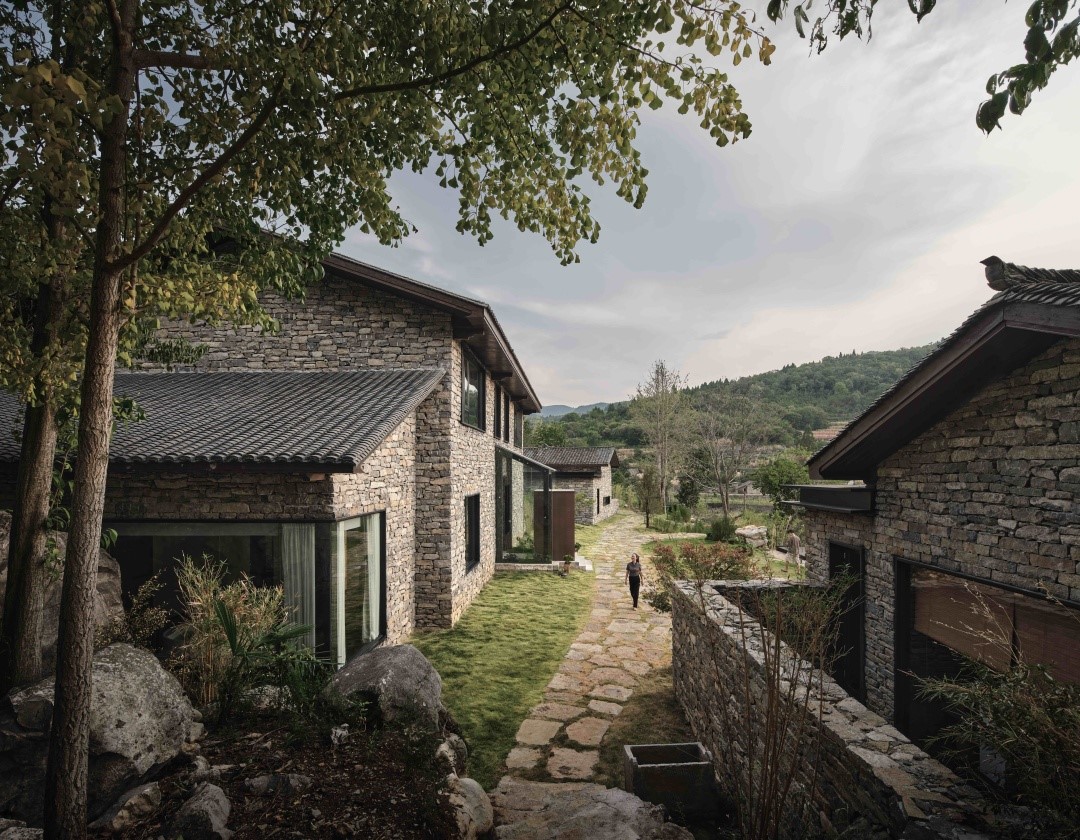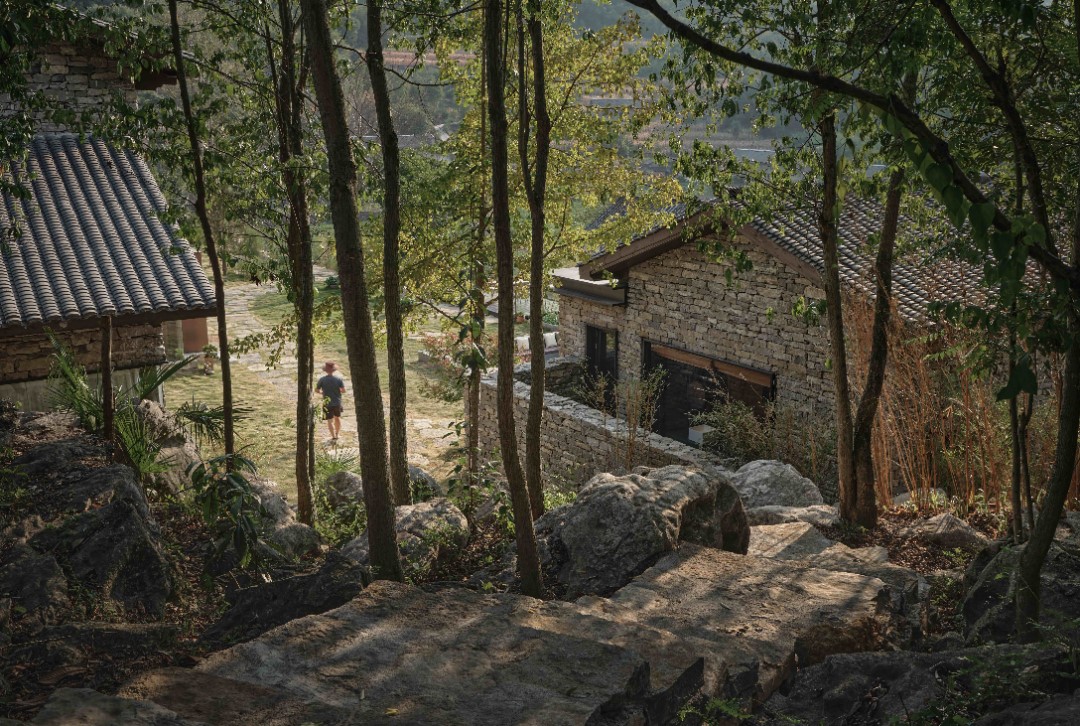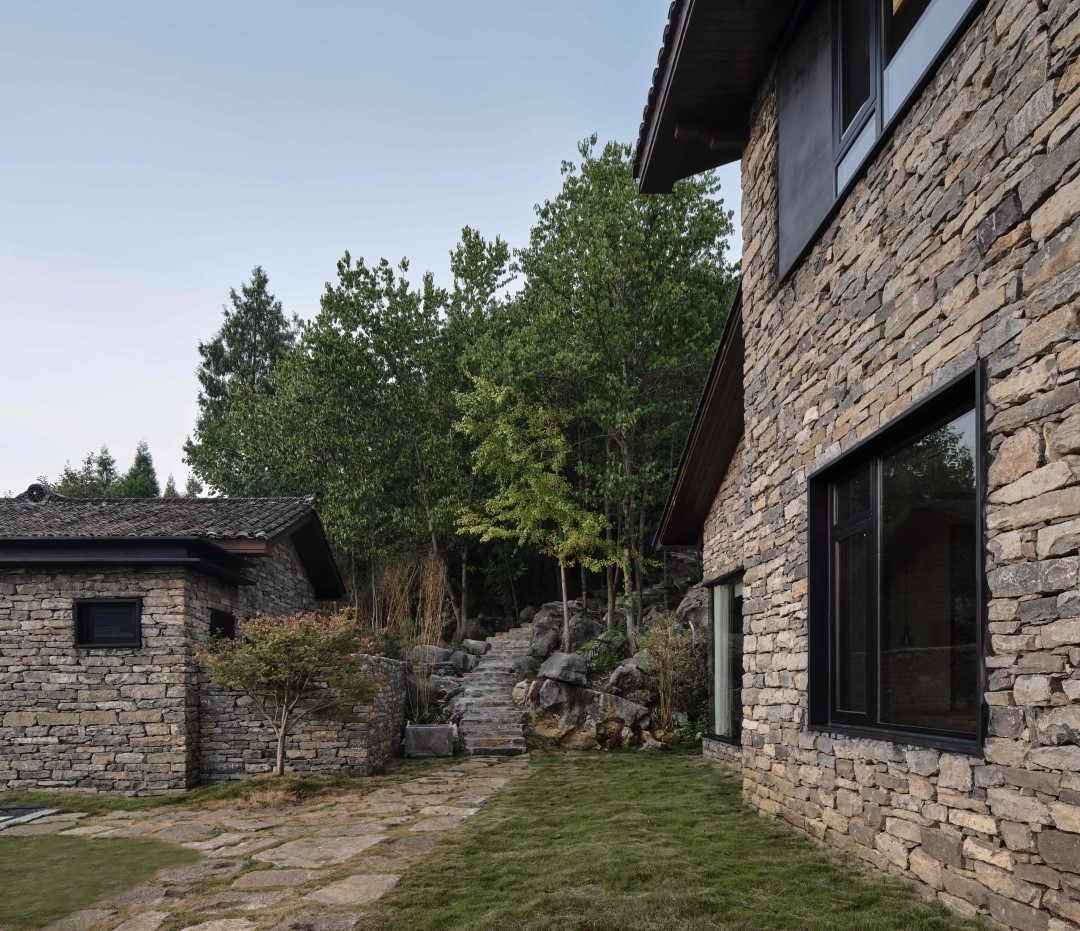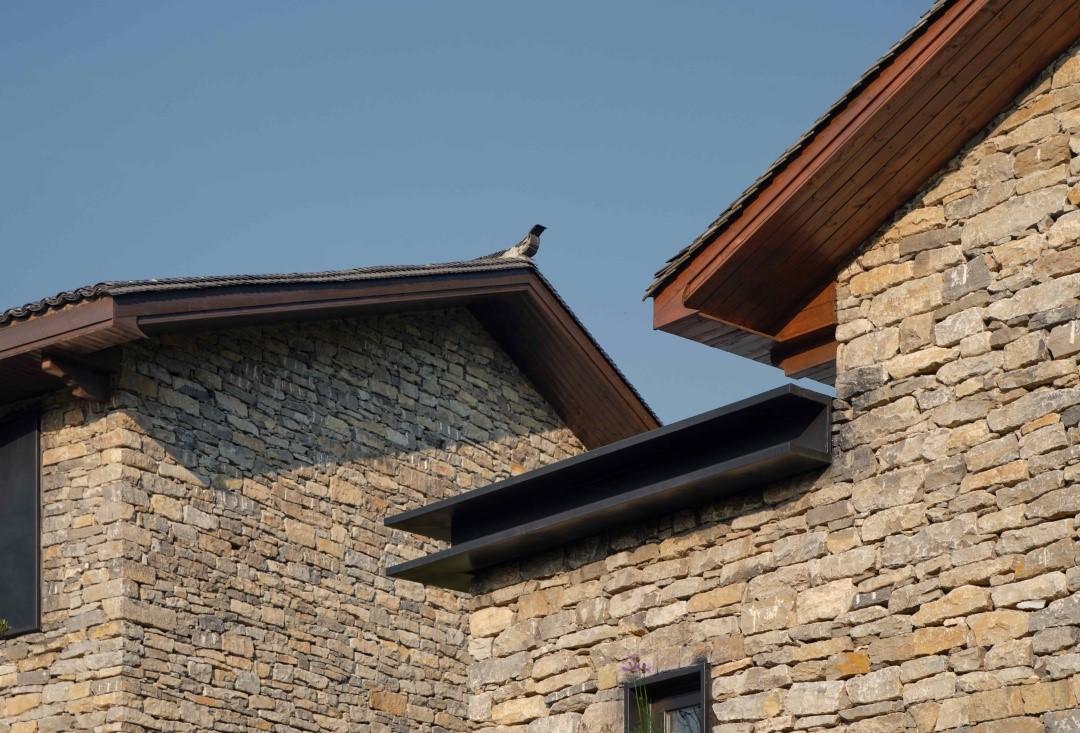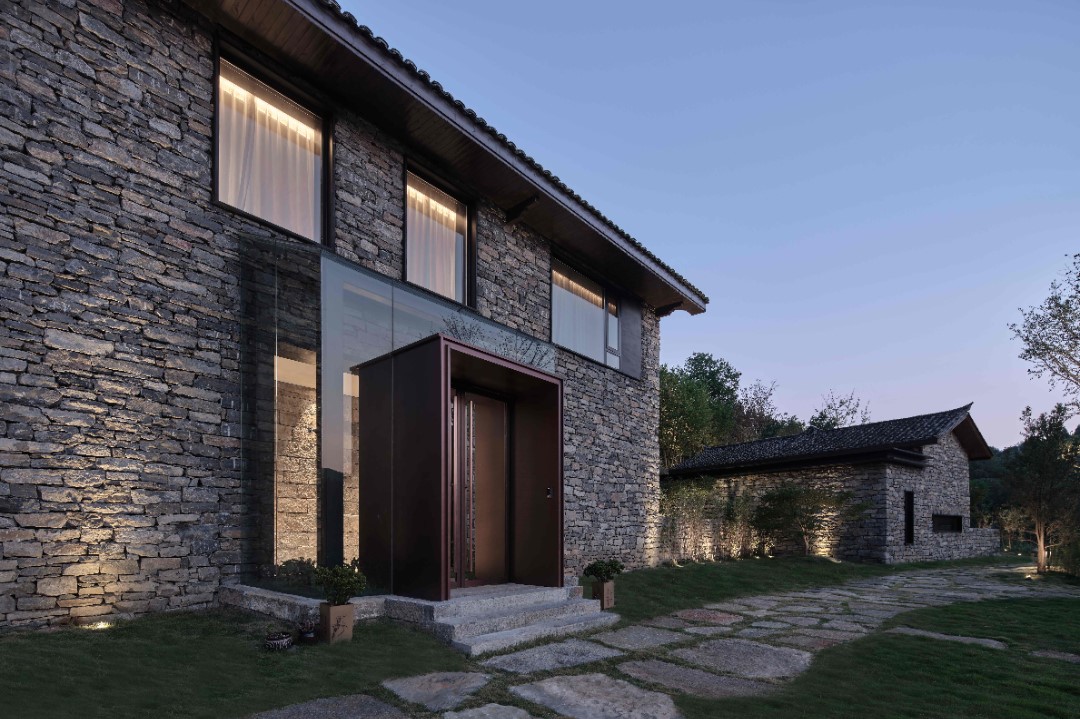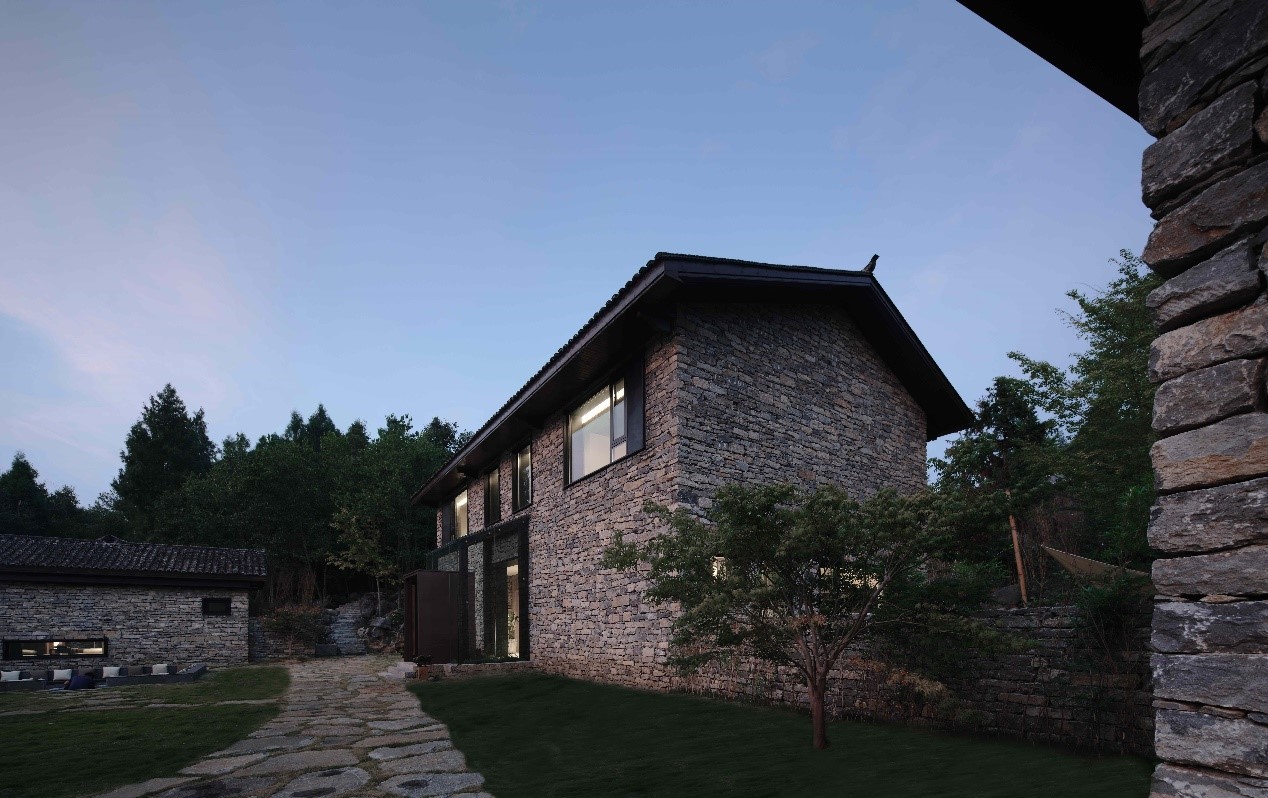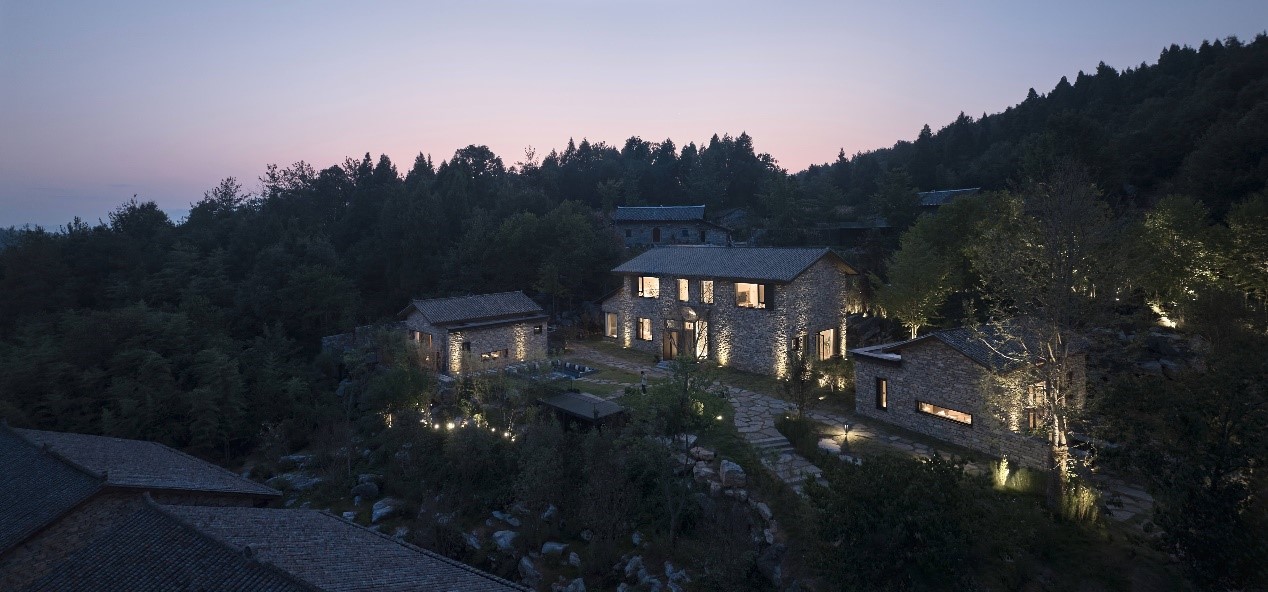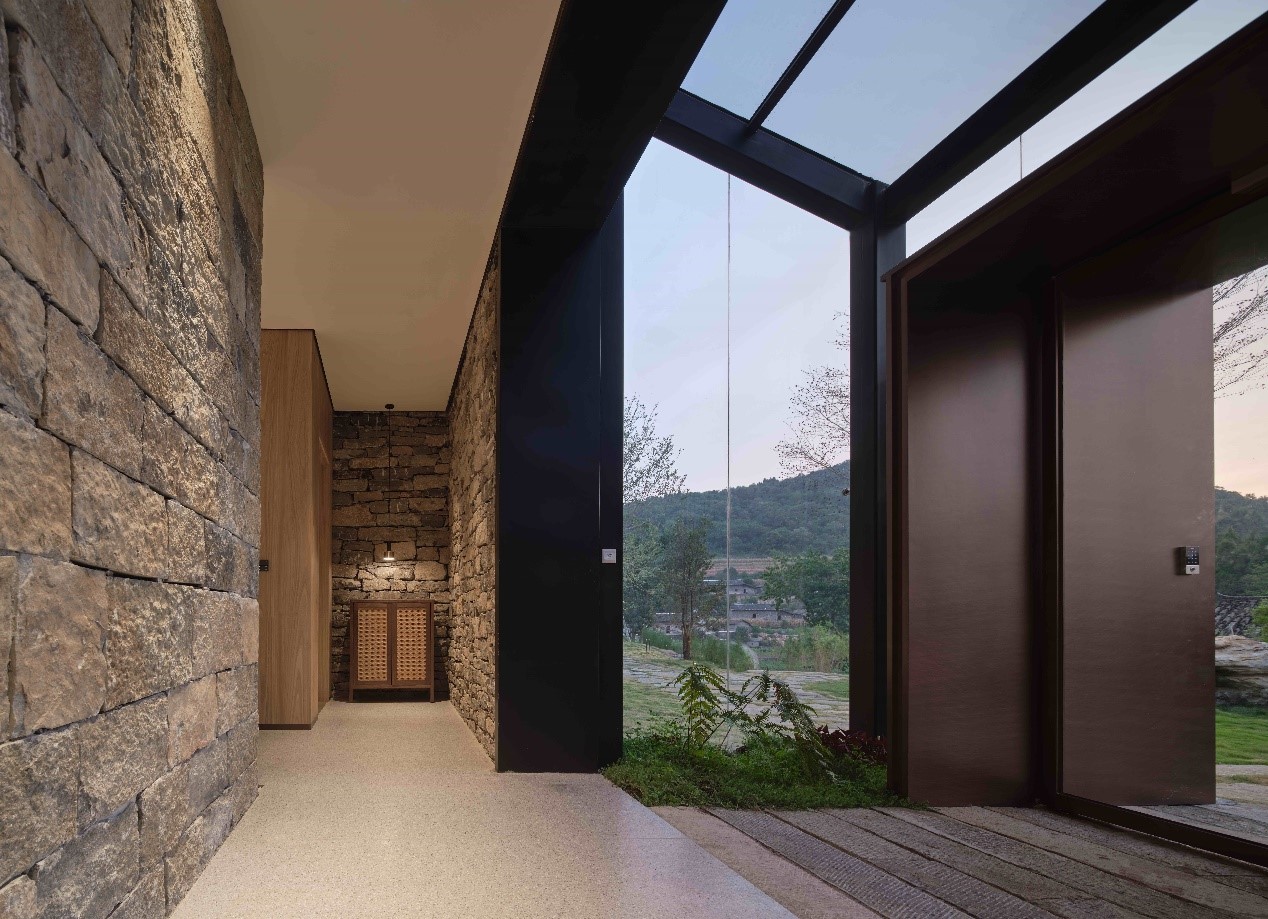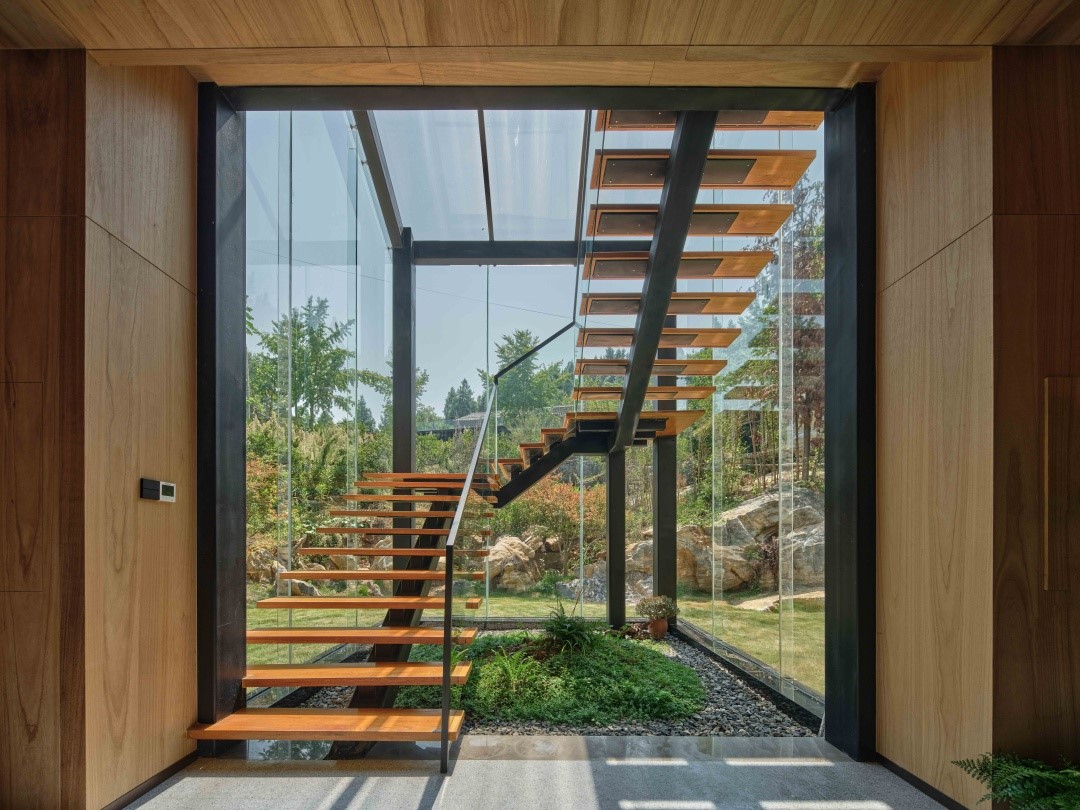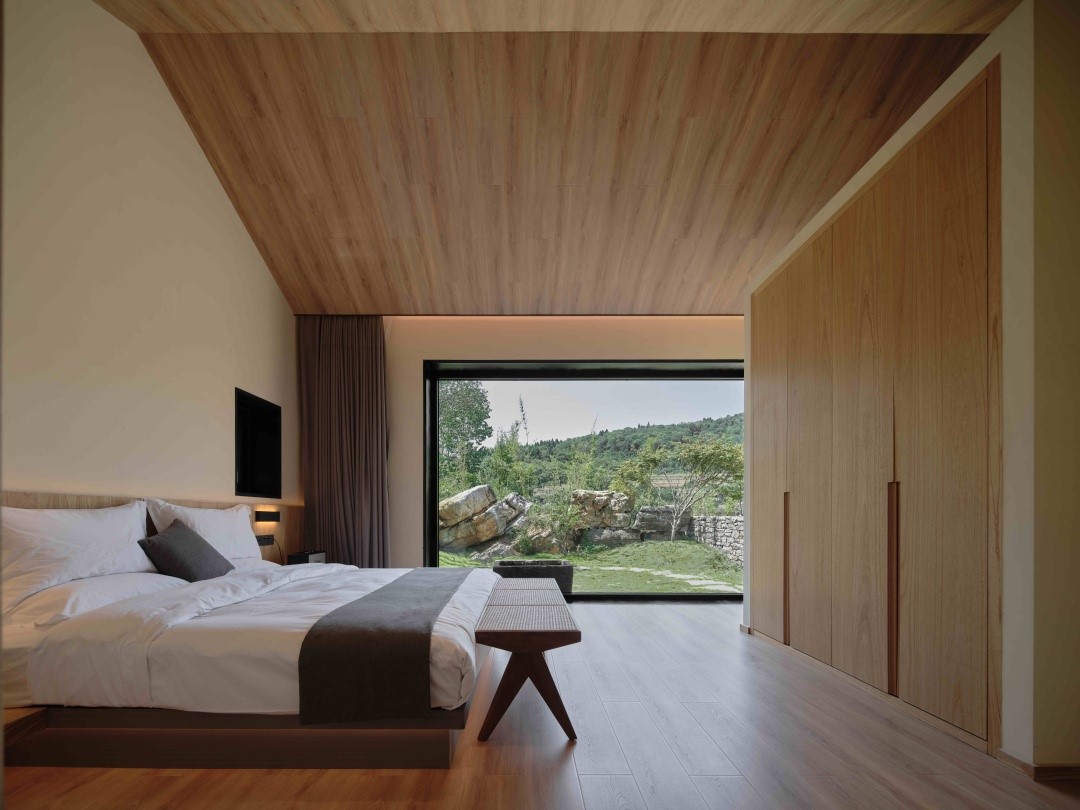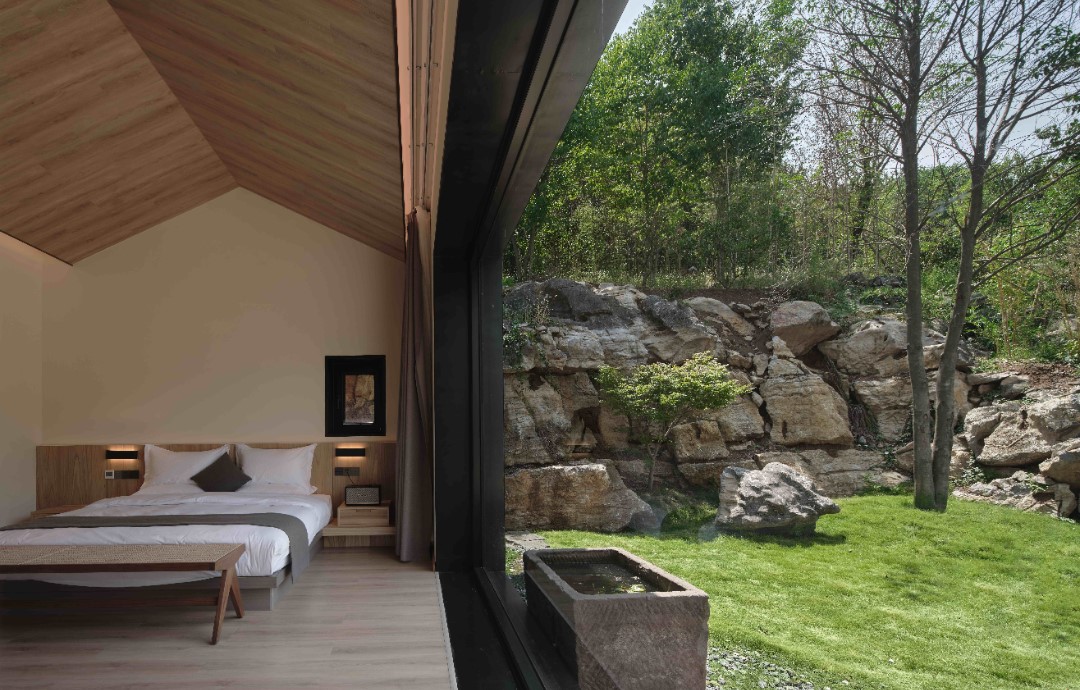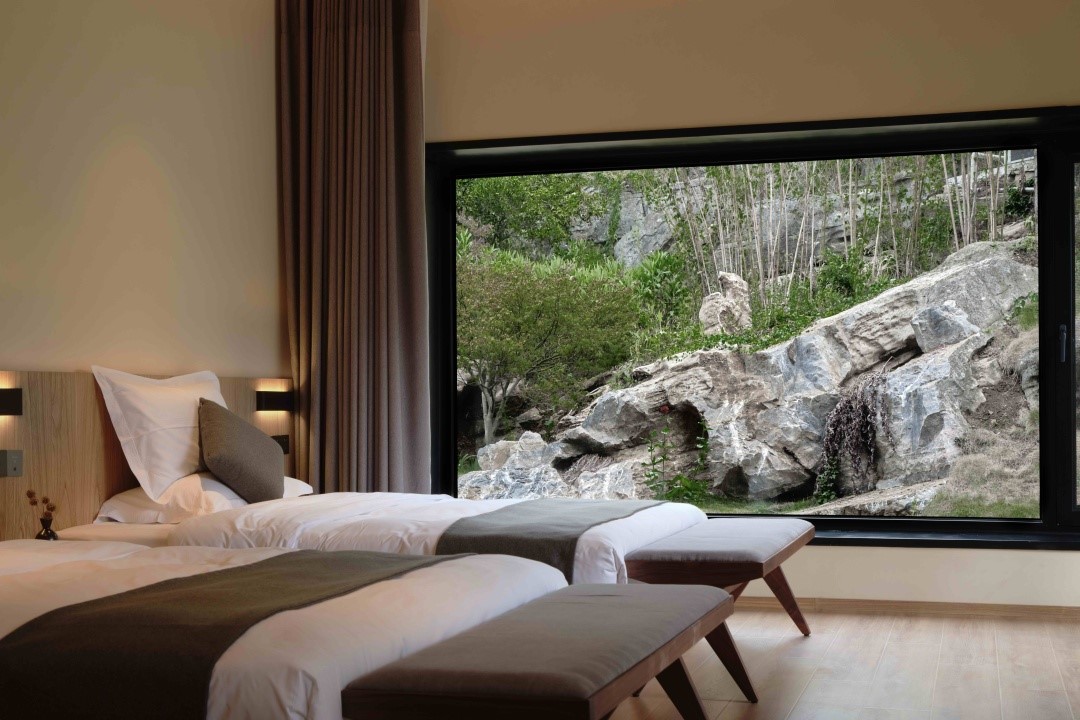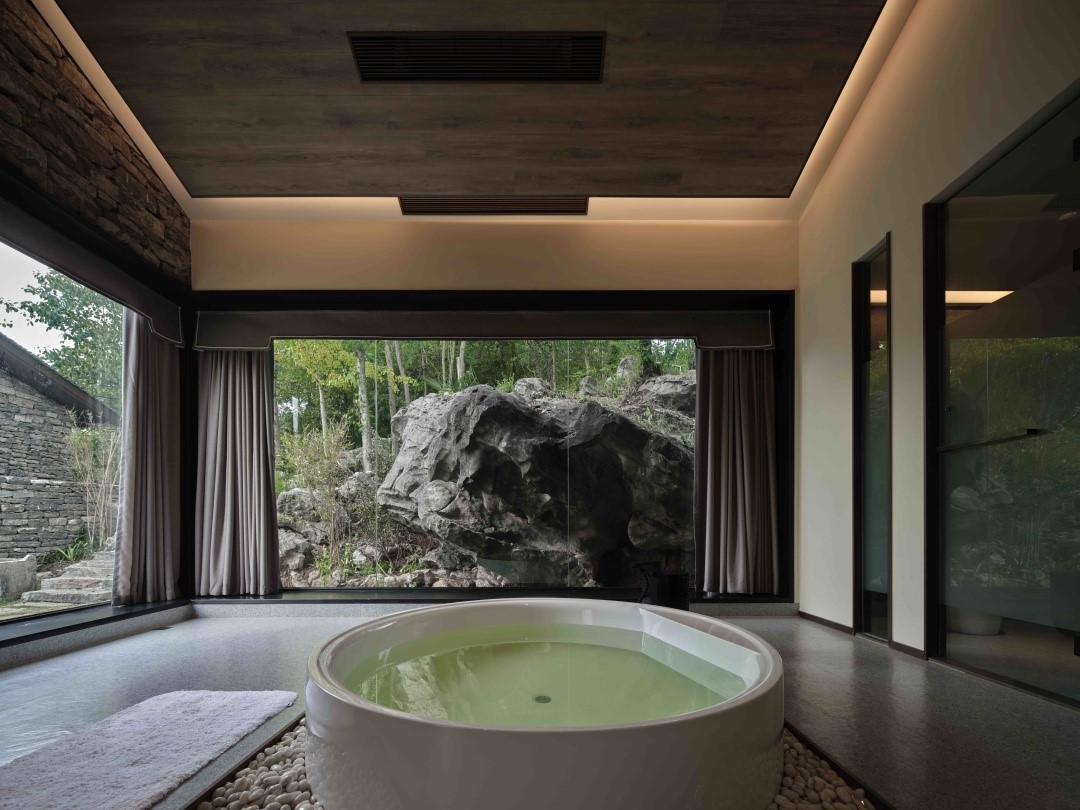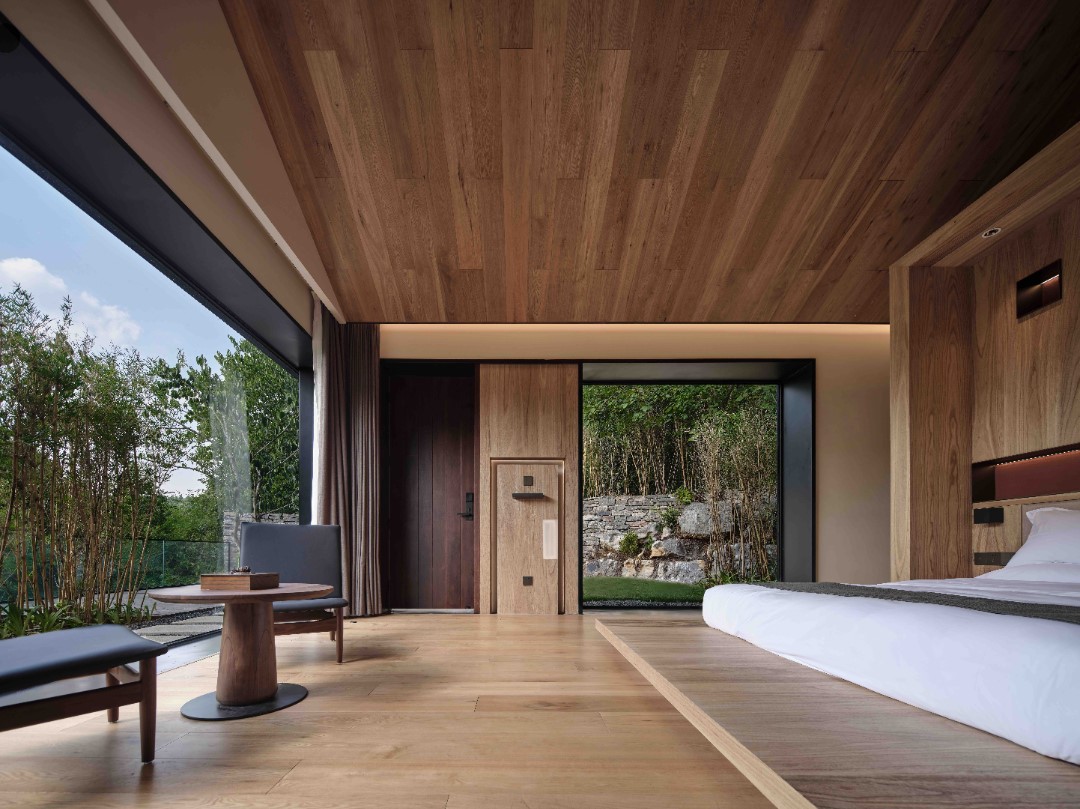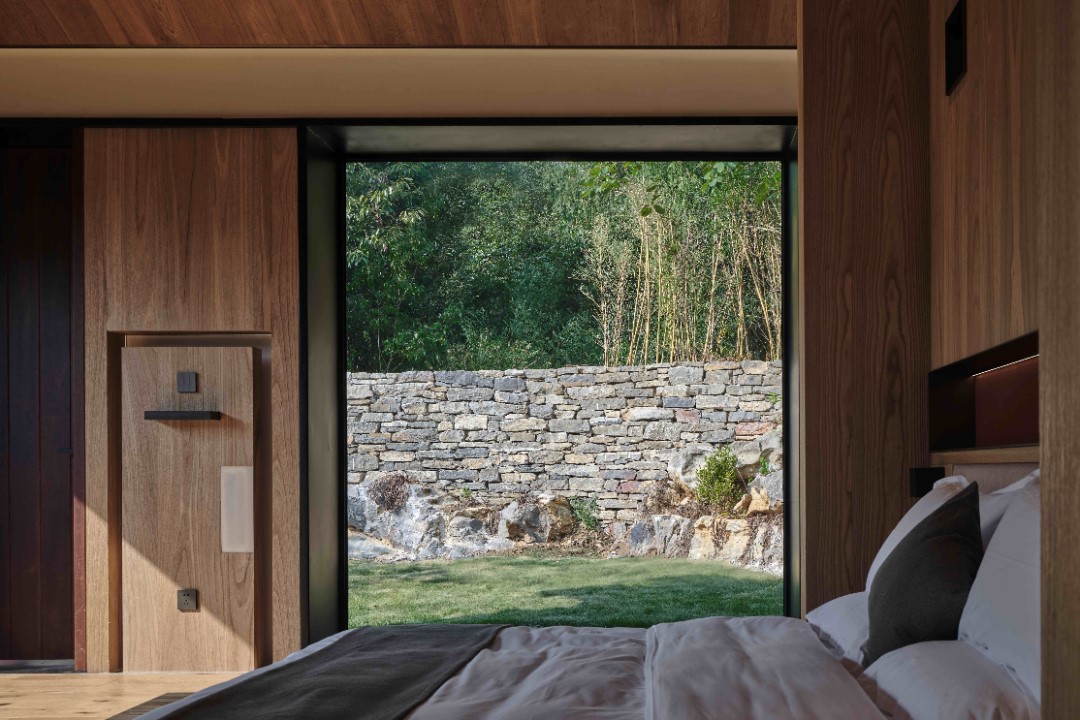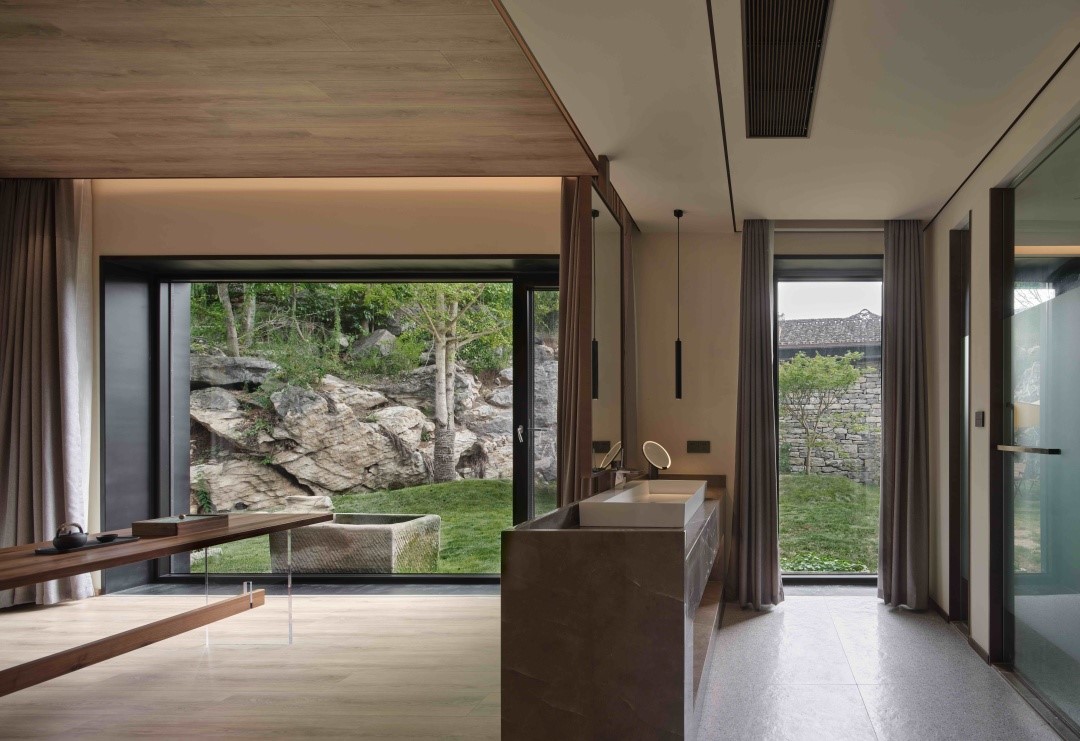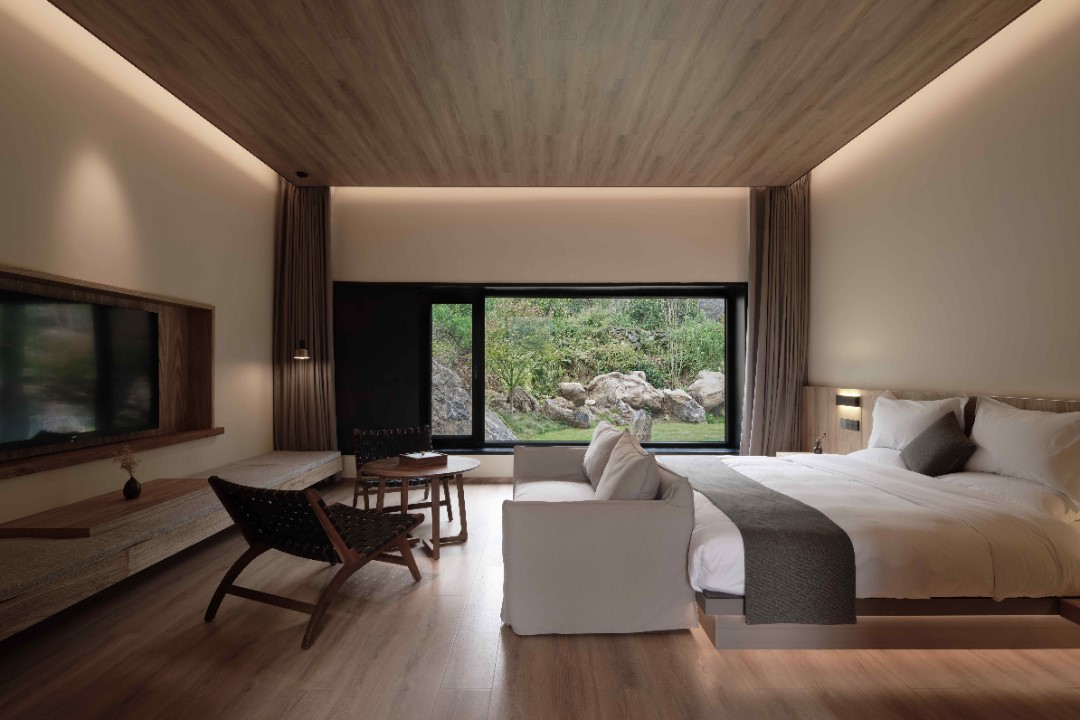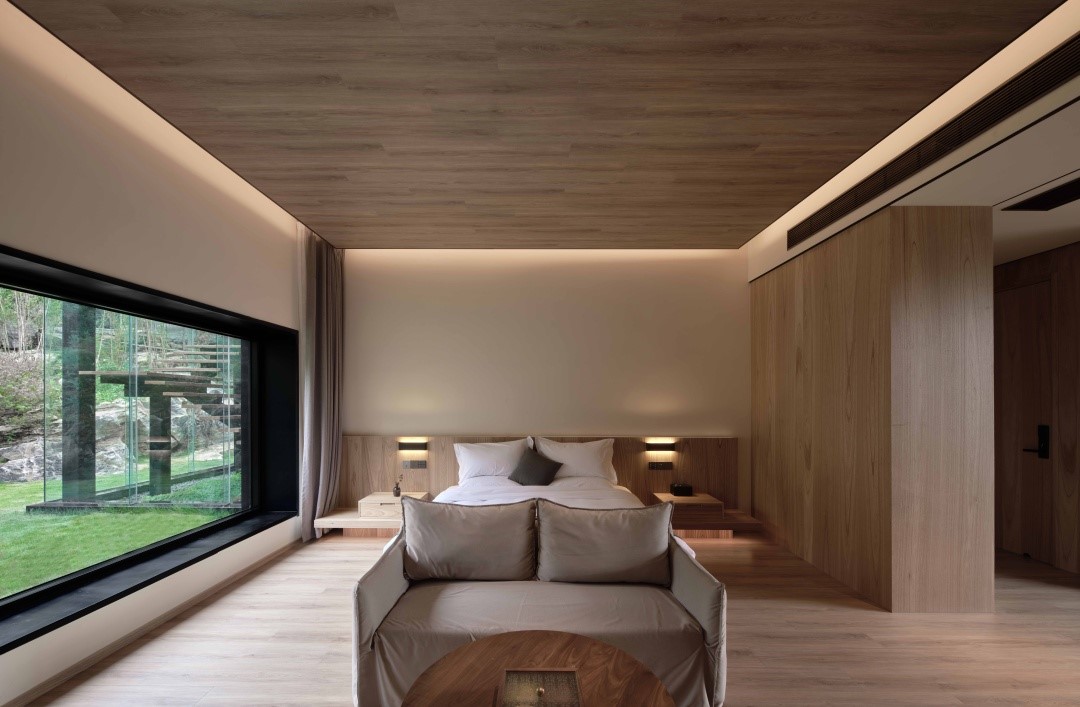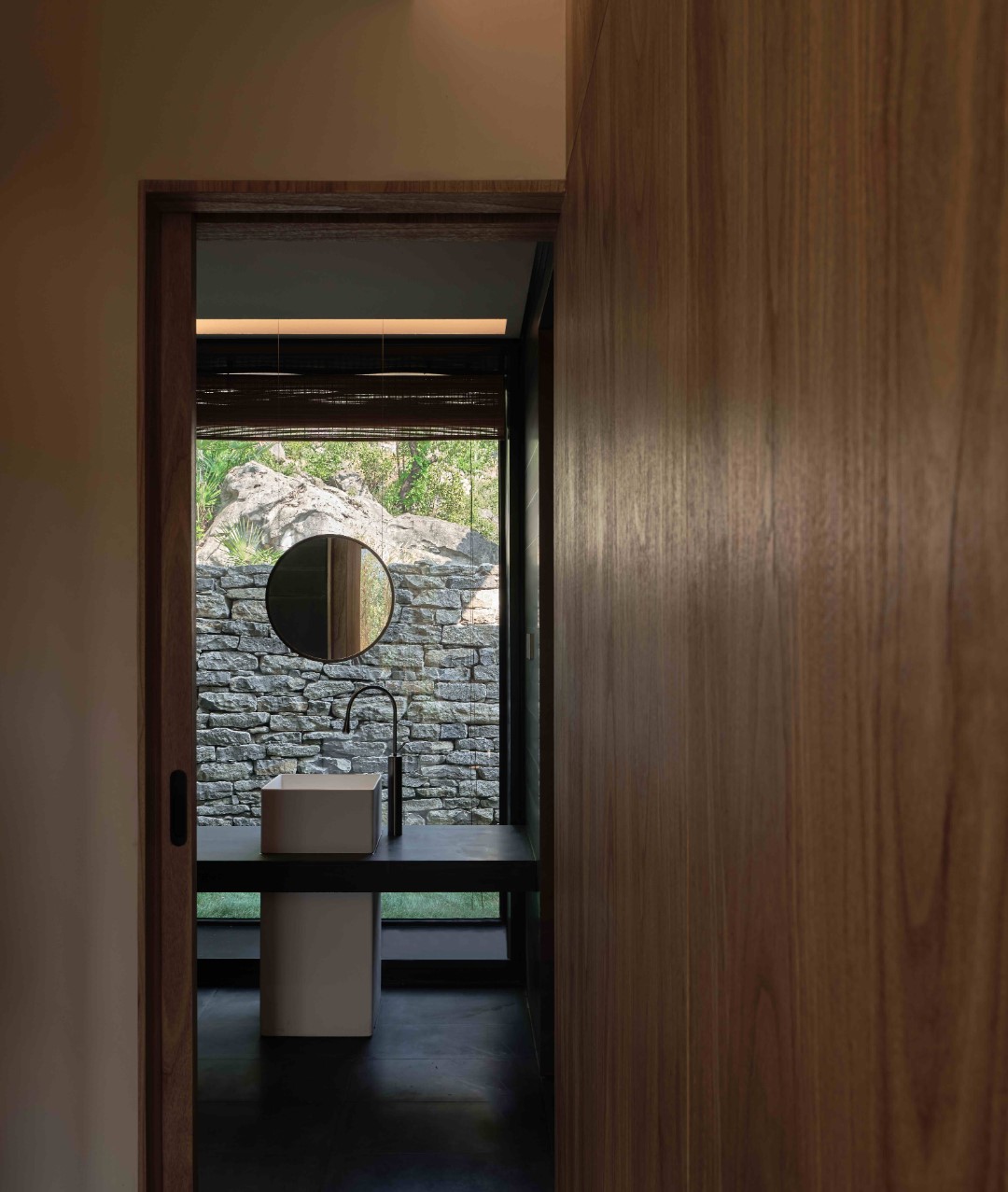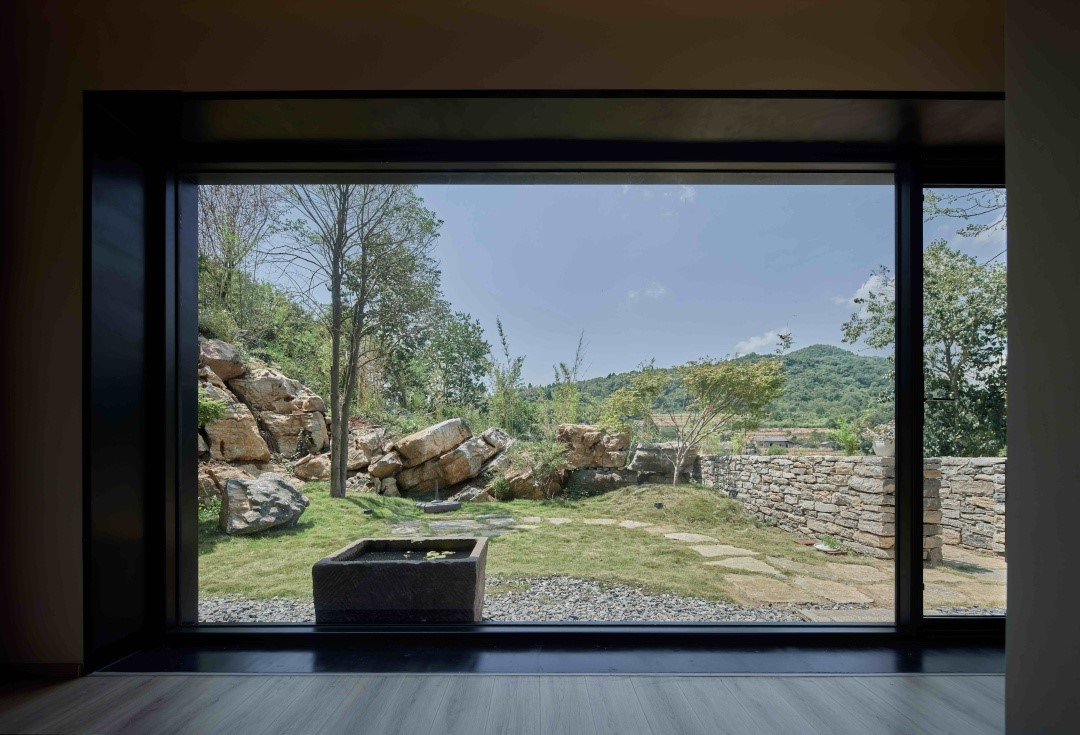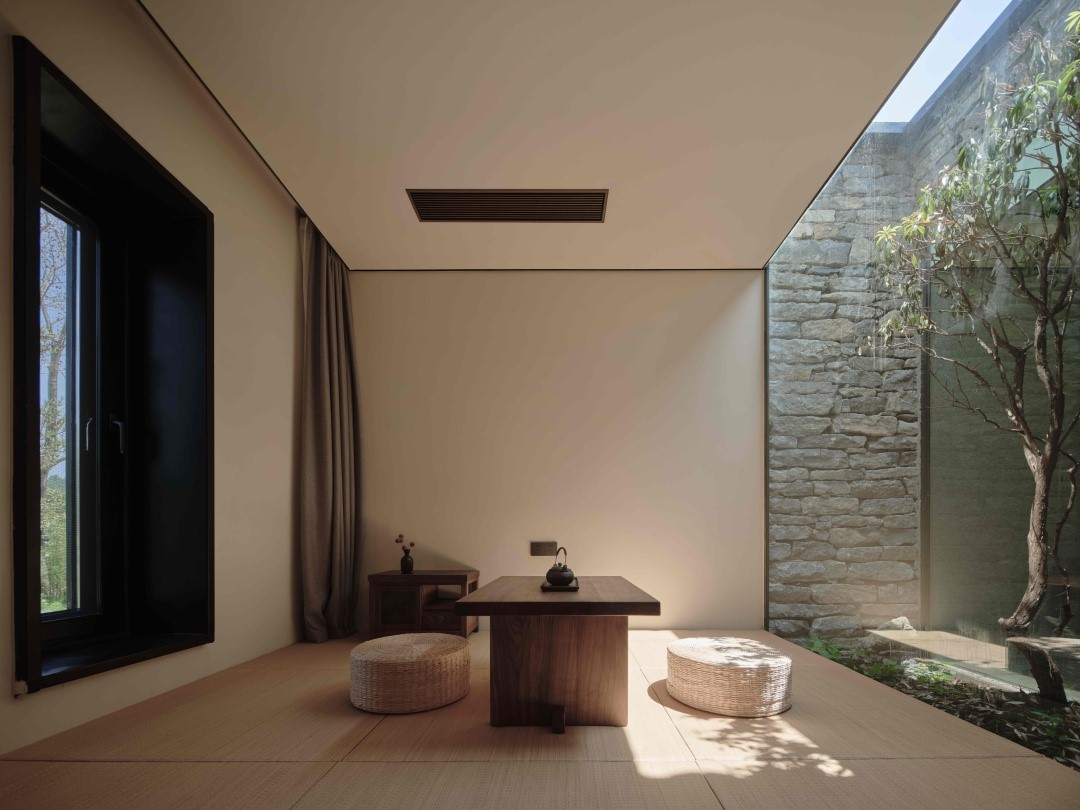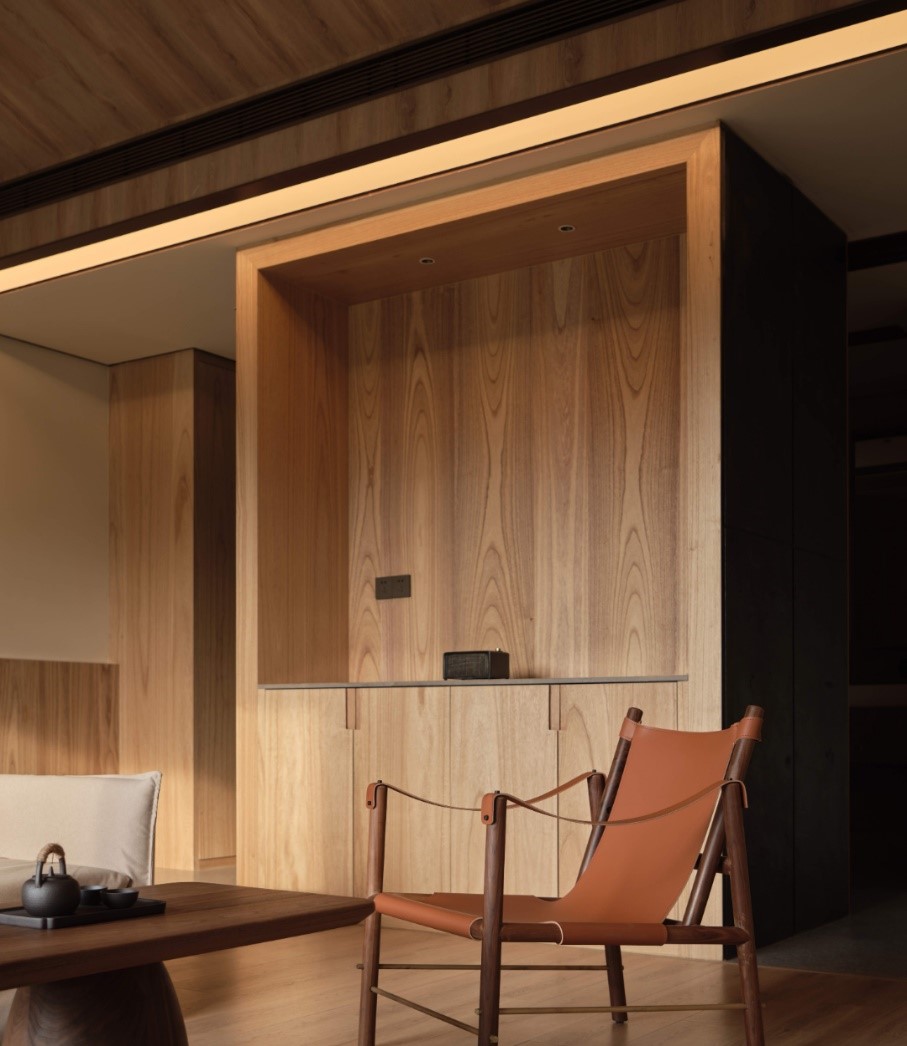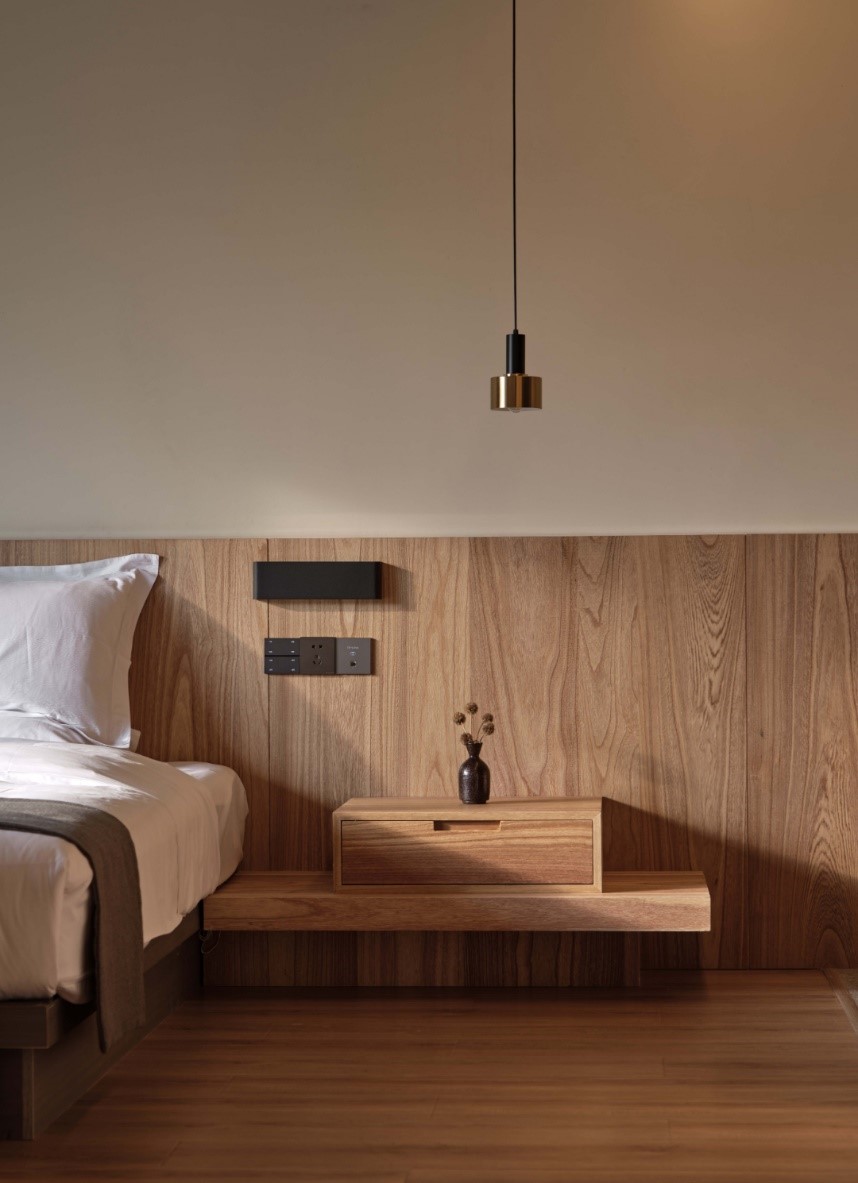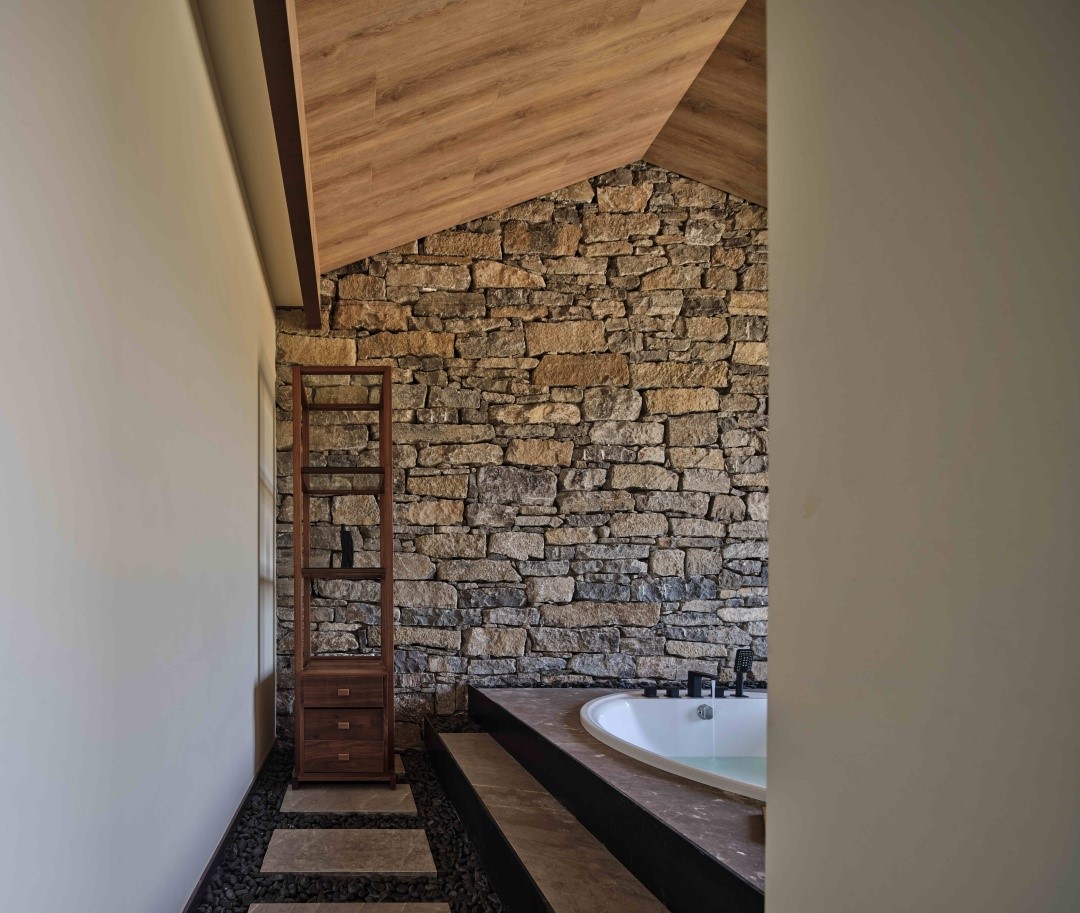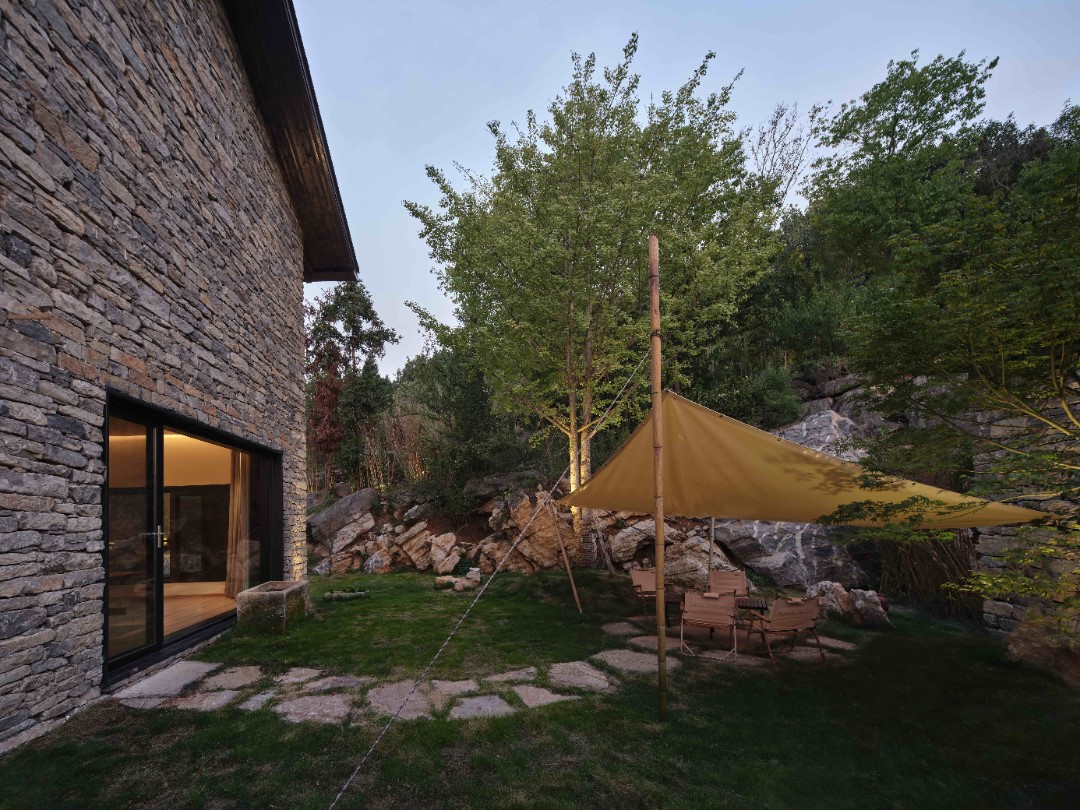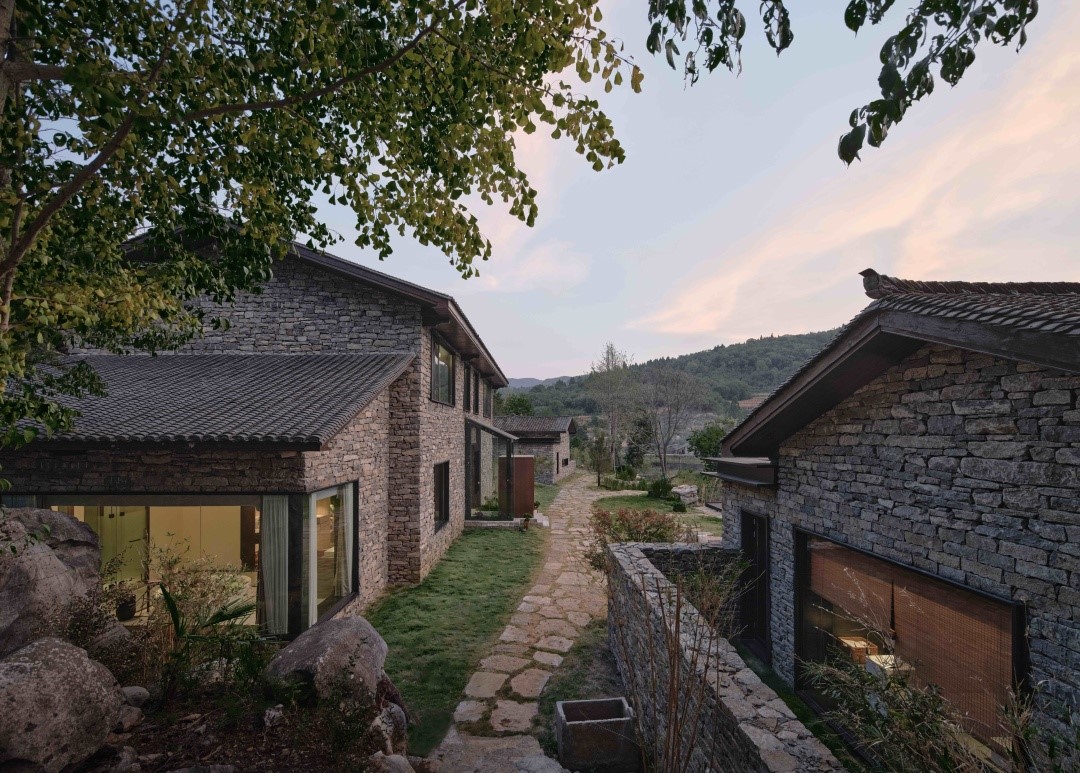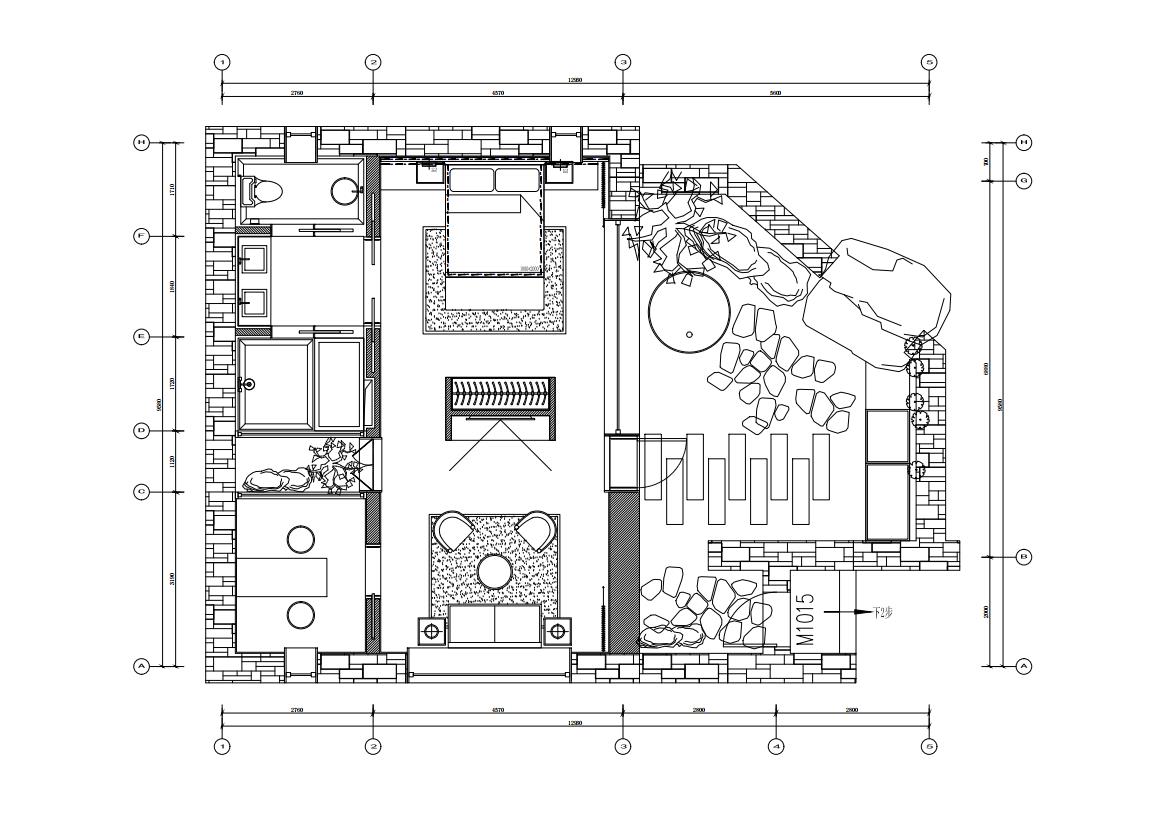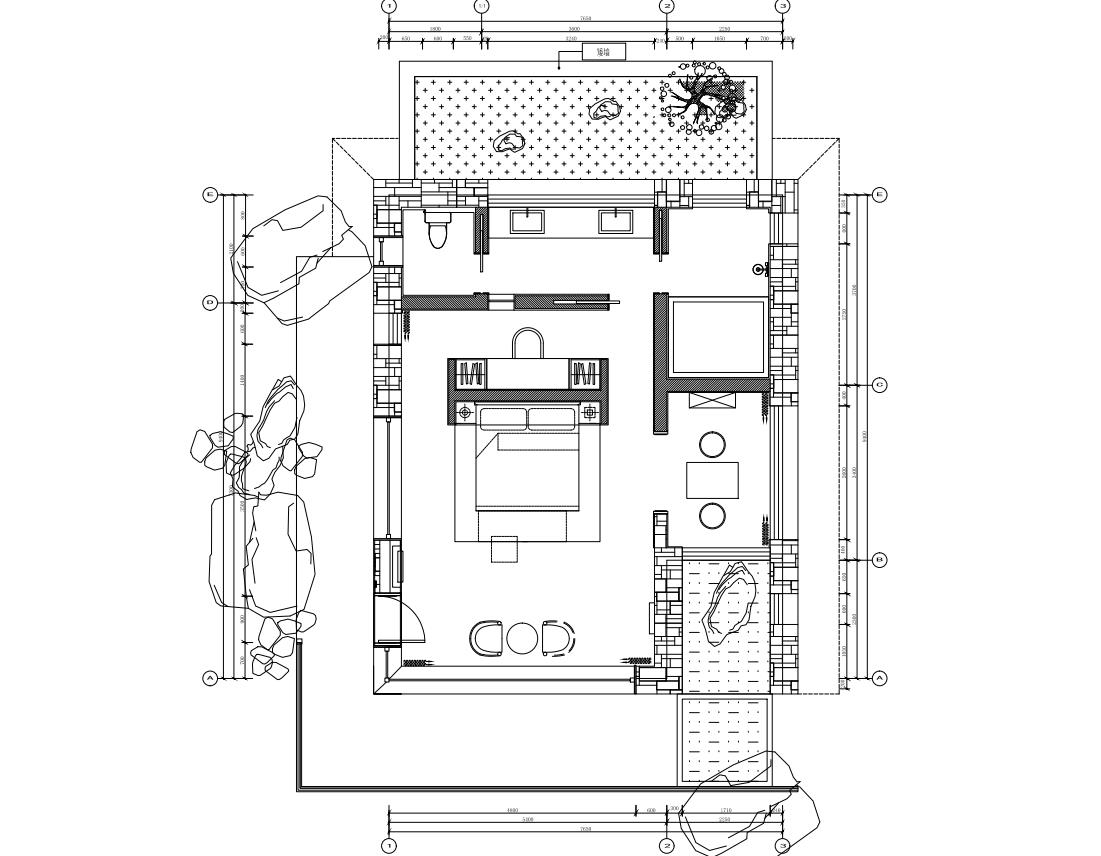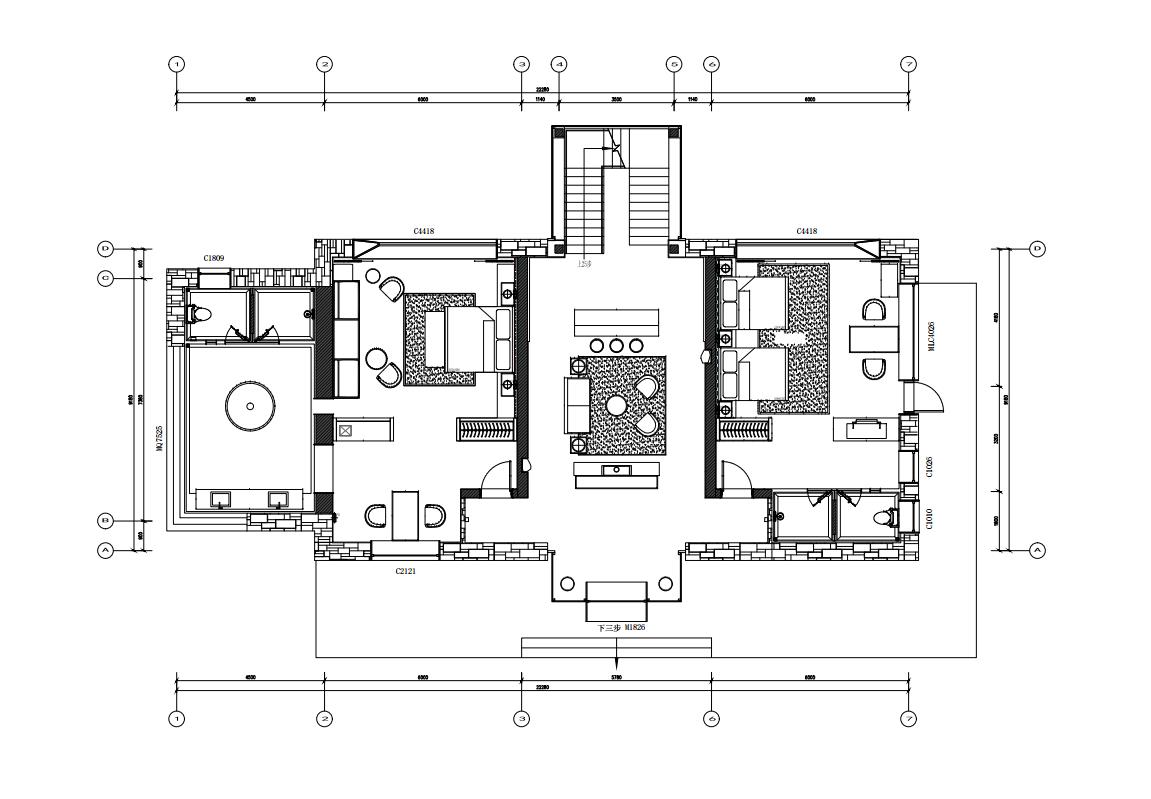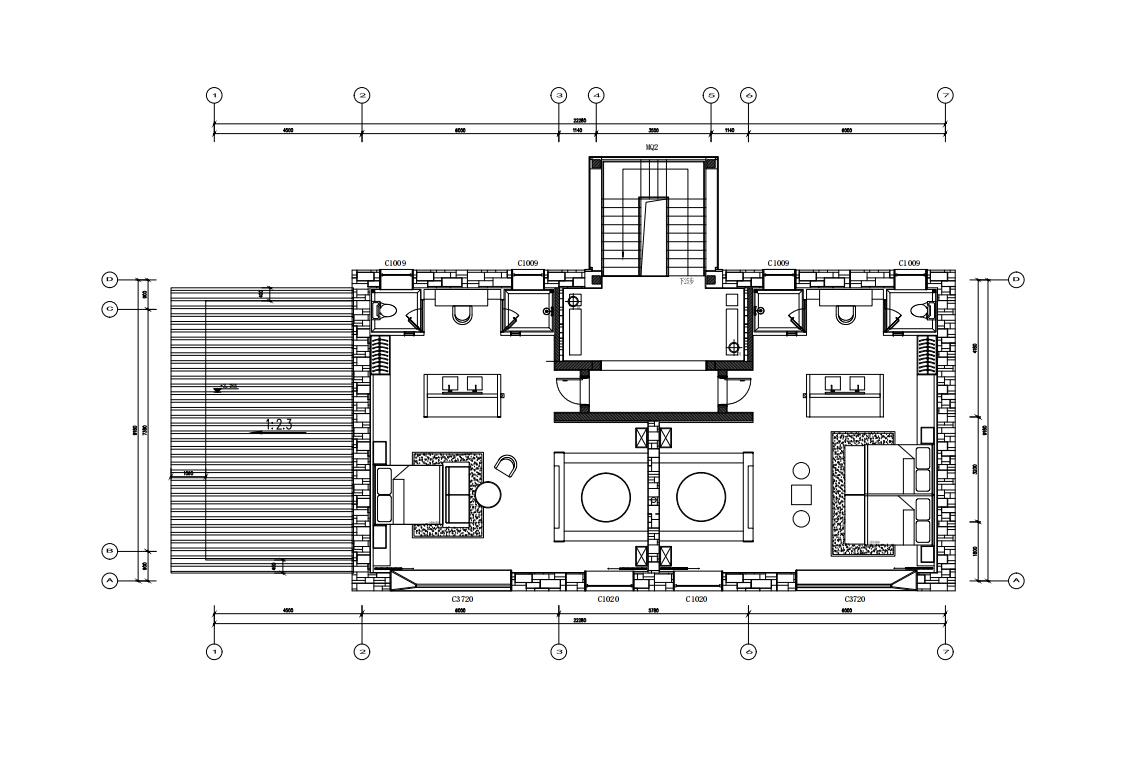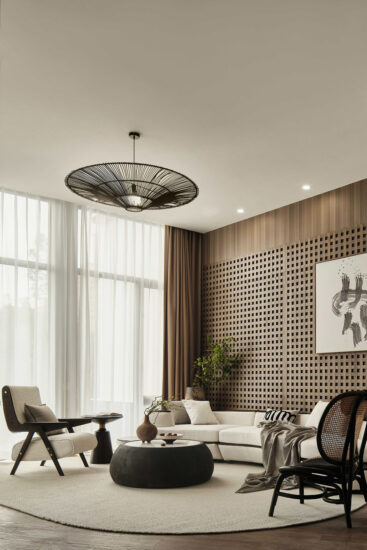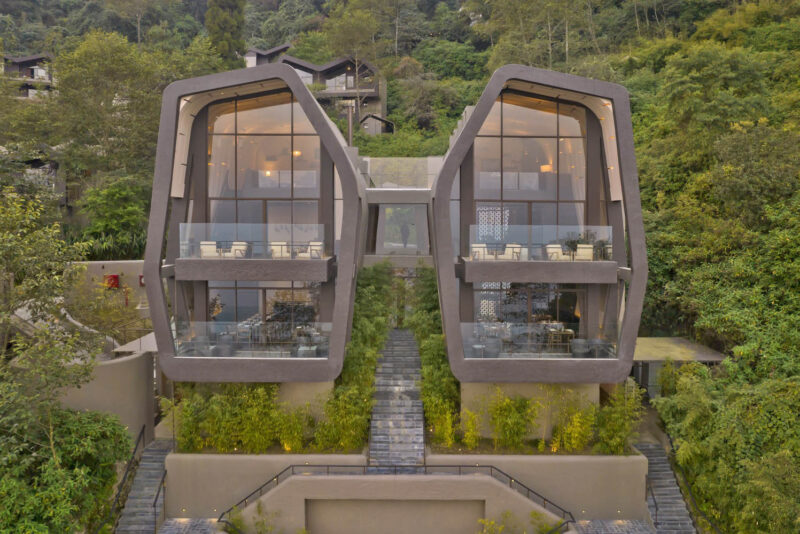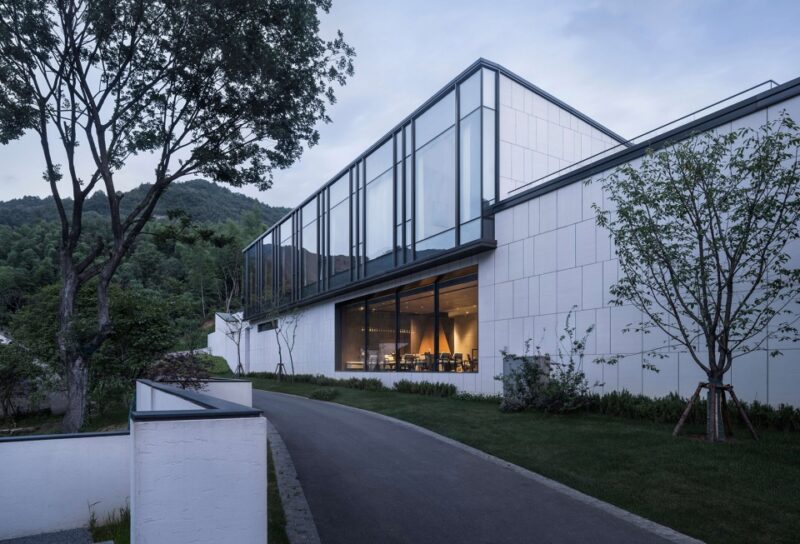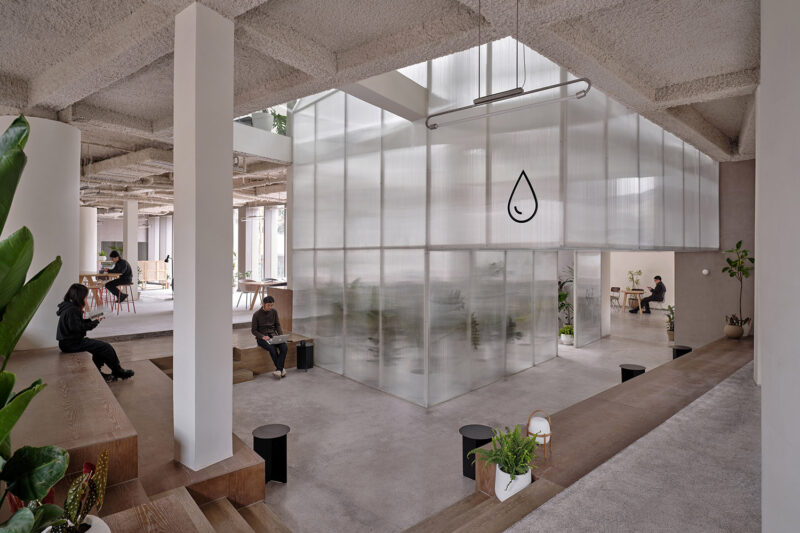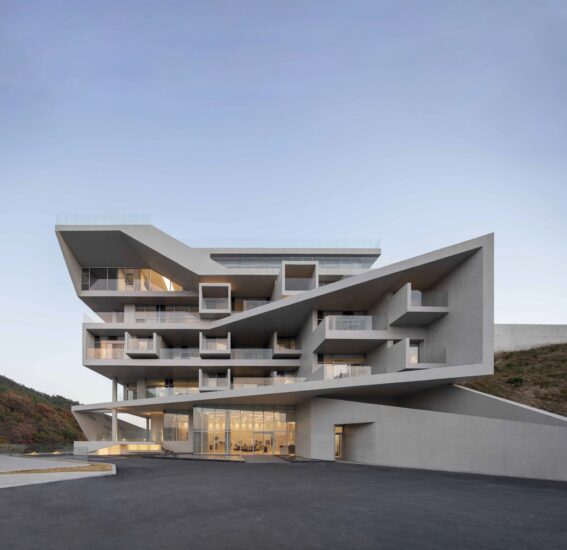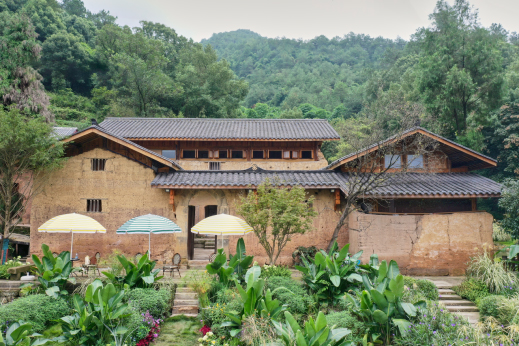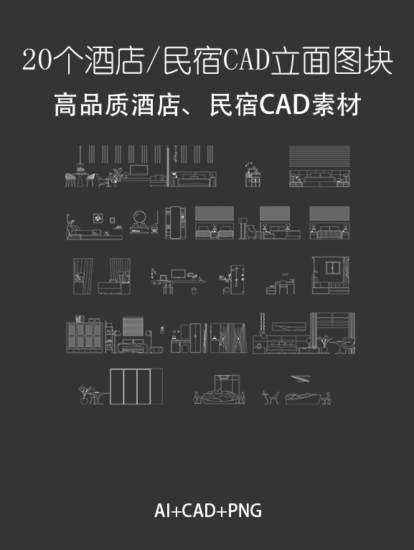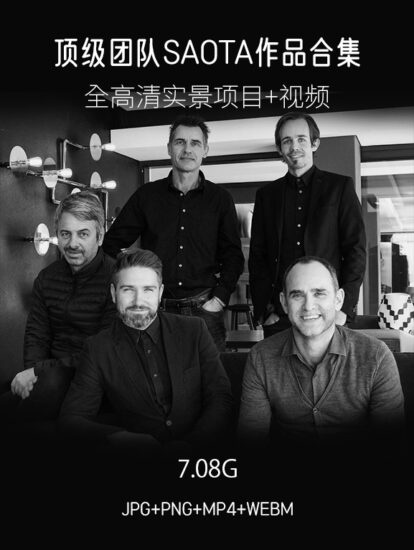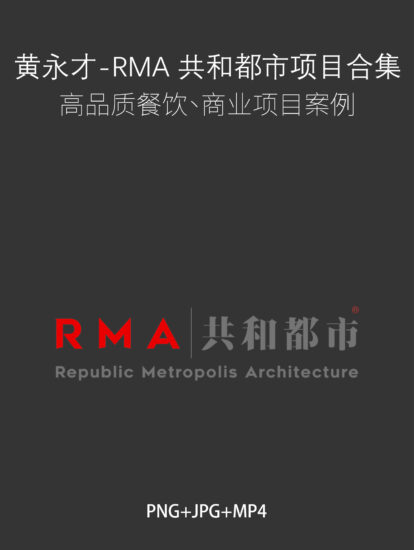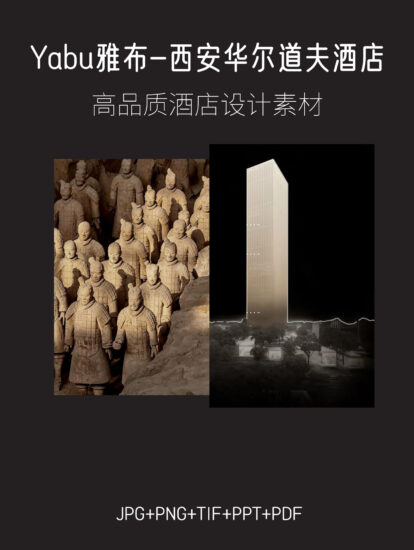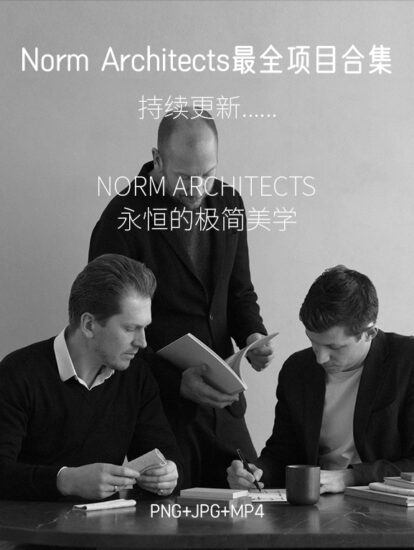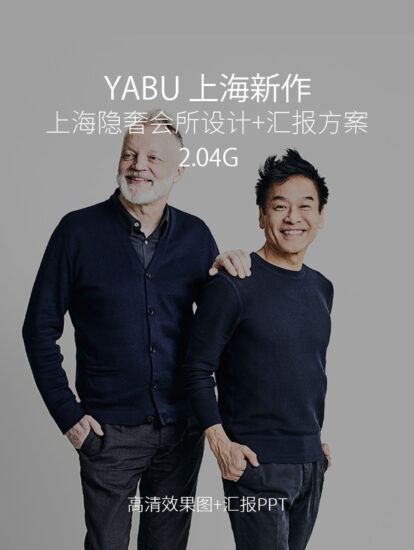多維度的當代鄉村肌理
我們欣喜的察覺,當代鄉村與城市之間的關係開始發生變化,不再是二元對立的存在,而是逐漸從相對割裂轉變為互相補給。盡管鄉村缺乏城市生活的便捷性,城市則因過度的人工化,與自然之間存在著堅固的界限,這種巨大的反差反倒給予鄉村一定的“時代紅利”。
We are pleased to notice that the relationship between rural and urban has begun to change. It is no longer the existence of binary opposition, but gradually transforms from relative separation to mutual supplement. Although the countryside lacks the convenience of urban life, there is a solid boundary between the city and the nature due to the excessive artificialization. This huge contrast gives the countryside certain “dividend of The Times”.
時至今日,設計師仍持續在鄉村建設拋出的問題尋找合理的解答:中國的鄉村文化如何呈現嶄新生命力?鄉村更新如何走出傳統的商業化模式?如何保護鄉村原本的肌理?
Today, designers continue to find reasonable solutions to the problems posed by rural construction:How does China’s rural culture show new vitality?How does rural renewal get out of the traditional commercial model?How to protect the original texture of the countryside?
隨著度假酒店、民宿等模式的介入,城鄉互動性提升,鄉村不再僅是少數人的詩與遠方,而是通過實地體驗、媒體觸及等方式更加直麵大眾群體。
With the intervention of resort hotels, B&Bs and other modes, the interaction between urban and rural areas has been enhanced. The countryside is no longer just a poem and distance for a few people, but more directly faces the public through field experience and media touch.
01/鄉村肌理:如何將設計隱於鄉村
Rural Texture: How to hide design in the countryside
不過多考慮鄉村應該是什麼樣子,在宜昌南岔灣石屋設計之初,設計師就明確了“鄉村先於設計”這一思考主題。
At the beginning of the design of Nanchawan stone House in Yichang, the designer made clear the theme of “countryside comes before design”.
南岔灣石屋位於長江三峽起始地湖北宜昌的一處小山村,山水如墨,擁有天然的地理人文景觀。南岔灣石屋一期完成於2020年,在一期設計時間內,設計師就已在腦海中構思二期的形態。
Nanchawan Stone House is located in a small mountain village in Yichang, Hubei Province, where the Three Gorges of the Yangtze River began. The landscape is like ink, with natural geographical and cultural landscape. The first phase of Nanchawan Stone House will be completed in 2020. During the first phase design time, the designer has already conceived the shape of the second phase in his mind.
在整個石屋的鄉村實踐中,避免從傳統酒店的方式去套設計模式,而是從延續鄉村肌理出發去思考新方向,力求保持地域純粹性。
In the whole village practice of stone house, avoid the traditional hotel way to set the design pattern, but from the continuation of the rural texture to think about the new direction, and strive to maintain the purity of the region.
在緩慢的時間進程中逐漸形成的村落,不是設計手段可以模擬,卻天然的具有鄰裏關係最自然的狀態,房屋的建設時常是順應環境而生,一棵古樹,一條古村路,或比鄰而居,均可作為建築選址坐標。
The village gradually formed in the slow process of time can not be simulated by design means, but naturally has the most natural state of neighborhood relationship. The construction of houses is often born in accordance with the environment. An ancient tree, an ancient village road, or living in close proximity can be used as the location coordinates of buildings.
經過實地考察南岔灣村莊,一期的兩棟建築原本是兩兄弟的樓房,一如當地其他村民的建築,均由當地山體石材搭建而成,缺乏很好的密閉性,時常滲雨進風,這也是在設計中的需要克服的因素。
After field investigation of Nanchawan village, the two buildings in phase I were originally the buildings of two brothers. Just like the buildings of other local villagers, they were built by the local mountain stone. They lacked good airtightness and often leaked into the wind through rain, which was also a factor to be overcome in the design.
02/空間肌理:如何厘清石屋的遞進關係
Spatial Texture: How to clarify the progressive relationship of stone houses
宜昌石屋為設計提供了原始參考,設計力圖呈現這種原生的美感,建築需要把時間的連續性充分表達出來。因石材外觀鮮明的地域特點,石材的使用不僅可延續鄉村風貌,還可將時間記憶在新建築中得以傳承。
The Yichang stone House provides the original reference for the design. The design tries to present the original beauty, and the architecture needs to fully express the continuity of time. Due to the distinctive regional characteristics of stone appearance, the use of stone can not only continue the rural style, but also inherit the time memory in the new building.
二期石屋由多棟建築構成看似無序的空間序列,延續和遞進一期石屋的形態關係,根據地勢散落在山坡上,與一期兩棟石屋不同,沒有依照統一的朝向,而是依據鄉村建房因勢而建的特征,呈現無序中的有序感。
The second phase consists of several buildings forming a seemingly disordered spatial sequence, which continues and progresses the morphological relationship of the first phase stone houses. They are scattered on the hillside according to the terrain. Different from the two stone houses in the first phase, they do not follow the unified orientation, but according to the characteristics of rural houses built according to the situation, presenting a sense of order in the disordered.
石屋取消傳統木結構改用鋼架結構體係保證穩定性,屋頂形態依然是典型的傳統坡屋頂,呈現簡化了的飛簷翹角形態,窗框係統采用現代材料,不同尺度的開窗取景自然,消彌了室內外界限,打破農村生活的固有印象,透出內部空間的現代生活質感。
Stone cancel the traditional wood to steel structure system which can guarantee the stability and is still a typical traditional sloping roof, roof form present simplifies the eaves, newborn window frame system adopts modern materials, different scales the window view of nature, to eliminate the boundary between the indoor and outdoor, break the inherent impression of rural life, reveals the internal space of modern life sense.
03/自然肌理:如何將石屋設計延續自然記憶
Natural Texture: How can stone house design continue natural memory
在此保留和退讓策略下,為了避免置入新建築帶來與環境的潛在競爭,采取梳理型設計,對環境組成元素做了大部分保留,鄉村原本的層次結構得到保護,且得以讓原有植被二次生長。
Under the strategy of reservation and concession, in order to avoid the potential competition with the environment brought by the new building, carding design is adopted, most of the environmental components are retained, the original hierarchical structure of the village is protected, and the original vegetation is allowed to grow again.
項目也在建造過程中收獲偶得的驚喜,山體本身是覆土型,在開挖部分山體的過程中,內部的石頭逐漸裸露出現,呈現了非常原始的狀態,因此建築的大尺度開窗盡可能的麵對這些石頭,形成極具力量感的對話,建造魅力在這裏得以充分展現。
Project also harvest in the process of building my surprise, the mountain is itself a overburden soil type, in the process of excavation of mountain, inside the stone gradually exposed, presents a very primitive state, so the construction of large scale window as much as possible in the face of these stones, form the strength of the dialogue, building charm can fully show here.
山體石頭的肌理狀態同樣是一種無序中的自然秩序,建築的布置與開窗相應與之忽近忽遠,或緊密或鬆弛的微妙動勢,使得室內空間盡數擁有獨特自然記憶的畫框。內部空間也盡可能的去裝飾化,外材內用,將石材運用在室內營造中,使得自然肌理在室內延續。
The texture of the mountain stone is also a natural order in disorder. The layout of the building and the opening of the window correspond to its proximity and distance, and the subtle dynamics of tightness or relaxation make the interior space full of picture frames with unique natural memory. The interior space is also as decorative as possible. The exterior materials are used in the interior, and the stone materials are used in the interior construction to make the natural texture continue in the interior.
04/時間肌理:如何將設計價值進一步延伸
Time Texture: How to extend the design value further
“鄉村建造要有時間性,特別是手藝的建造”。設計師表達建造過程並非是一蹴而就,而是與當地匠人合作逐漸打磨完成。
“Rural construction should have time, especially handicraft construction”. The designer said the construction process was not done overnight, but was done gradually in collaboration with local craftsmen.
石材不僅作為建造材料也作為室內材料,室內設計則按照現代生活方式介入,采用木材、鋼材與石材進行精確組合,避免裝飾性贅述。而為了在建造工藝方麵保存鄉村的“時間肌理”,設計師尋來當地匠人,通過他們純熟的手藝,更加細致的去營造鄉村的時代斷麵。
Stone is not only used as the construction material but also as the interior material. The interior design is involved in accordance with the modern lifestyle. The precise combination of wood, steel and stone is adopted to avoid the decorative repetition. In order to preserve the “time texture” of the countryside in the construction process, the designer recruited local craftsmen to create a more detailed cross-section of the rural era through their skilled skills.
同時,這種時間肌理還體現在原生態的生活還原,當一群人紮堆在鄉村生活,踩著石頭鋪設的不平整道路上行走,望著遠處村舍炊煙繚繞,城市的喧囂在這裏不複存在,取而代之的是真正的鄉野體驗,以及人與人之間質樸的相處方式。
Texture at the same time, this time also reflect in the original ecological life reduction, when a group of people living in the country, are enjoying standing on stone laying uneven walking on the road, looking at the cottage smoke fills the air in the distance, the noise of the city no longer exists here, instead, the real experience of countryside, and simple way to get along with between people.
誠然,當代鄉村不全是美好的一麵,鄉村當然也不是設計師展現精英化的秀場。直麵當下鄉村的現狀,建造可在鄉村推廣的建築審美範式,這是宜昌石屋在設計中希望傳達的理念,也是設計之外,理想得以延伸的價值。
To be sure, the contemporary countryside is not all rosy, and the countryside is certainly not an elitist showcase for designers. Facing the current situation of the countryside and building an architectural aesthetic paradigm that can be promoted in the countryside, this is the idea that Yichang Stone House hopes to convey in the design, and also the value of extending the ideal beyond the design.
∇ 獨棟套房一平麵圖
∇ 獨棟套房二平麵圖
∇ 二期客房一平麵圖
∇ 二期客房二平麵圖
項目信息
項目名稱: 南岔灣·石屋部落民宿二期
項目地址: 湖北省宜昌市夷陵區分鄉鎮南岔灣
項目類型:民宿
建築麵積(平方米):700㎡
完成年份: 2021年
設計範圍:建築/室內/軟裝
設計公司: 中國美術學院風景建築設計研究總院
主創設計師: 黃誌勇
建築設計:黃誌勇、黃曉峰
室內設計:黃曉峰、莫雲霞、何偉波
設備設計:章永剛
攝影: 奧觀建築視覺
業主: 宜昌渡心石屋民宿旅遊開發有限公司


